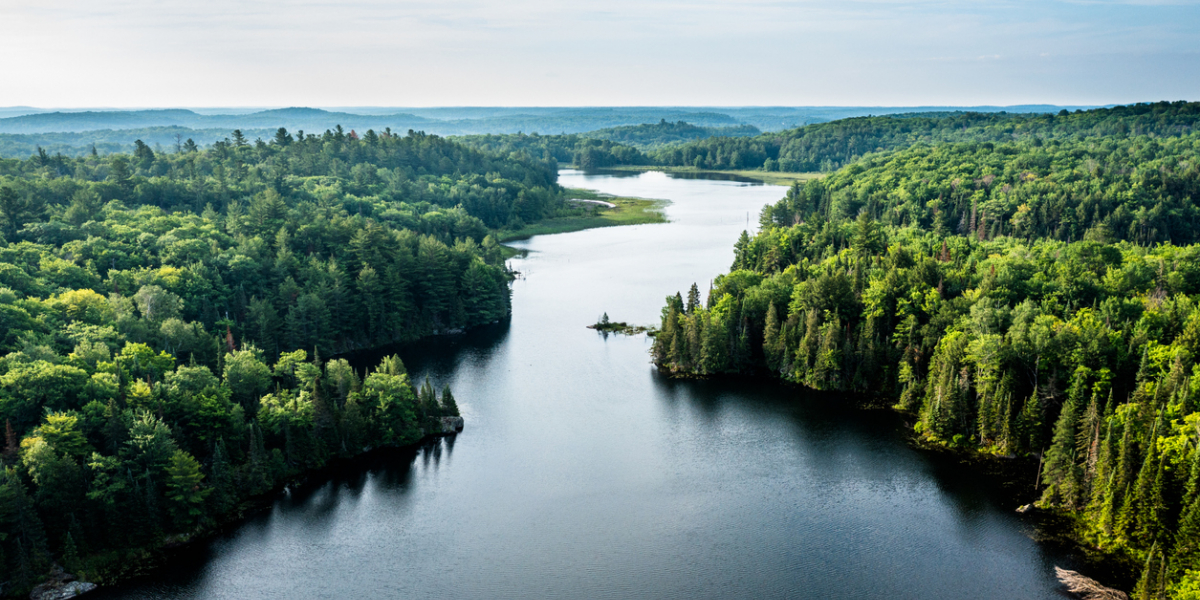
December 15, 2023
By Paige Olmsted and Courtney Kehoe
What if there was a way to reduce the impact of climate change, support species and habitats at risk, and improve the health and well-being of communities? Imagine the same strategy could also contribute to an economy that is better equipped to adapt to expected changes in the years to come? Maintaining and restoring healthy natural systems is an effective and inexpensive way to support all of these priorities.
Nature can absorb and store over 30% of emissions needed to meet global targets, but ecosystems and natural spaces do all kinds of other things that provide value to communities. Coastal wetlands reduce the impacts of floods and provide habitat for key fish species, while supporting recreational or commercial fishing and tourism. Healthy forests clean the air, provide critical habitat for species, sequester carbon, and provide timber. Diverse agricultural systems are more resilient to drought and other extreme weather events, while protecting rural farmers and food production. Indigenous peoples have deep ancestral ties to the lands and natural resources where they live. Being able to spend time outdoors and recreate in nature has measurable positive impacts for physical and mental health.
Overall it is clear that we have a tremendous dependency on the natural world. And yet, we have not done enough to invest in supporting this foundation.
To reach Canada's 2030 targets to limit carbon emissions and reduce biodiversity loss we need to be investing upwards of 20 billion dollars per year. Currently, most investment in nature – whether that's increasing protected and conserved areas, incentivizing sustainable farming practices or forestry practices, or restoring natural systems – comes from public or philanthropic sources. But when we think of how nature is connected to so much of what we do and what our economies rely upon, it is clear that a far wider range of investors should be involved in ensuring this safety net remains robust.
Canada can’t afford to underinvest in nature, but the funding gap is too big for governments and philanthropists to carry alone.
Bringing new funders to the table, including private sector organizations, is needed to scale investment. Part of the challenge is that nature has unique attributes compared to more traditional investments. Investing in nature can be perceived as more risky, since ecological systems are complex and not every aspect of a nature investment can always be controlled – it is easier to precisely assess the GHG impact of solar panels than a forest. Also, the benefits we derive from nature are not accounted for in the ways that we currently measure value. For example, since improved water quality and shorebird habitat is not part of how we assess the value of flood protection, grey infrastructure could appear to be more cost effective than a restored wetland. Unfortunately, the current economic system does not value the long-term benefits of nature that extend beyond the typical time horizon of conventional investments, creating a further barrier between potential investors and high-impact nature-positive activities.
How can we better align the need for investment in nature, and the array of potential investors that are seeking impact? Conservation finance can help make investments in nature more attractive. It does so by offering the instruments that align and incentivize partners to invest in activities that generate financial returns alongside environmental, cultural and/or social benefits.
There is a need for a deeper understanding of the unique attributes of investing in nature and if, when, where and how certain conservation finance instruments apply in Canada. Improved communication and coordination among investors, project developers, ENGOs, Indigenous communities, and investors will also support investment growth. As more varied groups become interested in the potential to invest in nature to address climate concerns, increase resilience, and support sustainable economies, there is a need for nature-positive projects and activities that meet investors' criteria.
The Nature Investment Hub is born out of this need. We hold a vision where investment in nature grows and aligns with the value and benefits nature creates for communities, cultures and economies–today and for future generations. To get there, we have set a bold mission to drive a fivefold increase in investments in nature together with public, private, philanthropic, and Indigenous leaders. And in doing so collectively scale nature-positive activities across the country that support solutions for biodiversity and climate. Learn more by watching the recording of our launch event here.
Courtney Kehoe is the Managing Director of the Nature Investment Hub and Paige Olmsted is their Conservation Finance Specialist. The Nature Investment Hub is a Solutions Space of Generate Canada in partnership with the Smart Prosperity Institute, whose shared vision is a strong and inclusive economy that thrives within nature’s limits. Learn more about the Nature Investment Hub on their website.